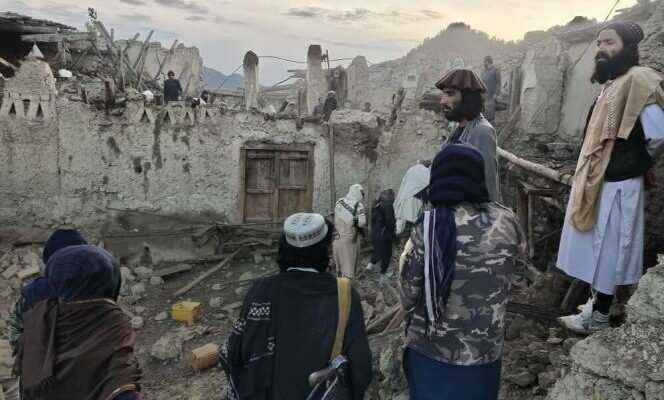The powerful earthquake that struck Wednesday, June 22, around 1:30 a.m., a rural and mountainous region of eastern Afghanistan could be one of the deadliest earthquakes in the country since 2002.
In the evening, the balance sheets reported a thousand dead and nearly 1,500 injured. With a magnitude of 5.9, it occurred very close to the border with Pakistan, according to the American Seismological Institute (USGS). Local authorities and several emergency humanitarian organizations have indicated that the number of victims could still increase.
On Wednesday, an image published by the Taliban summed up the tragedy experienced by populations living in often remote and difficult to access areas. It showed a long trench of graves dug, under heavy rains and in the cold, by inhabitants wishing to bury their dead. “Emergency shelter is an immediate priority”said the United Nations (UN) Office for the Coordination of Humanitarian Affairs (OCHA). The population also needs emergency care, assistance with water, hygiene and sanitation services, food and non-food aid, added OCHA.
The most affected districts are those of Bermal, Zerok, Nika and Gayan in the province of Paktika, and that of Spera in the neighboring province of Khost. In Gayan alone, almost 200 people were killed and around 100 were injured. In this district alone, up to 1,800 houses were reportedly destroyed and damaged, or 70% of the dwellings. Many homeless families have nevertheless found accommodation with relatives or members of their communities.
A major test for the Taliban
The Afghan Ministry of Defense, which leads operations on the ground, sent 45 ambulances and dispatched five helicopters to Paktika province to facilitate medical evacuations, and a medical team to Gayan district. The heavy rains and the wind, however, hampered the action of air rescue. UNICEF has also deployed teams of health workers in the district of Gayan, and in those of Bermal and Spera. The road between Shahidano Chawk and Sharana Hospital has been closed to all civilian traffic to facilitate transportation of the injured.
This disaster constitutes a major test for the capacity to manage the affairs of the country of the Taliban government, ten months after its return to power by force. It comes at a time when Afghanistan has been ostracized from the international community. The Islamist regime is facing a serious liquidity crisis, linked to American financial sanctions, in particular the freezing of nearly 10 billion dollars (8.7 billion euros) from the Afghan Central Bank. The Taliban can only count on drip payments and a first budget presented, at the end of January, of 450 million dollars, essentially made up of taxes and customs duties collected since their arrival, in August 2021.
You have 42.8% of this article left to read. The following is for subscribers only.
